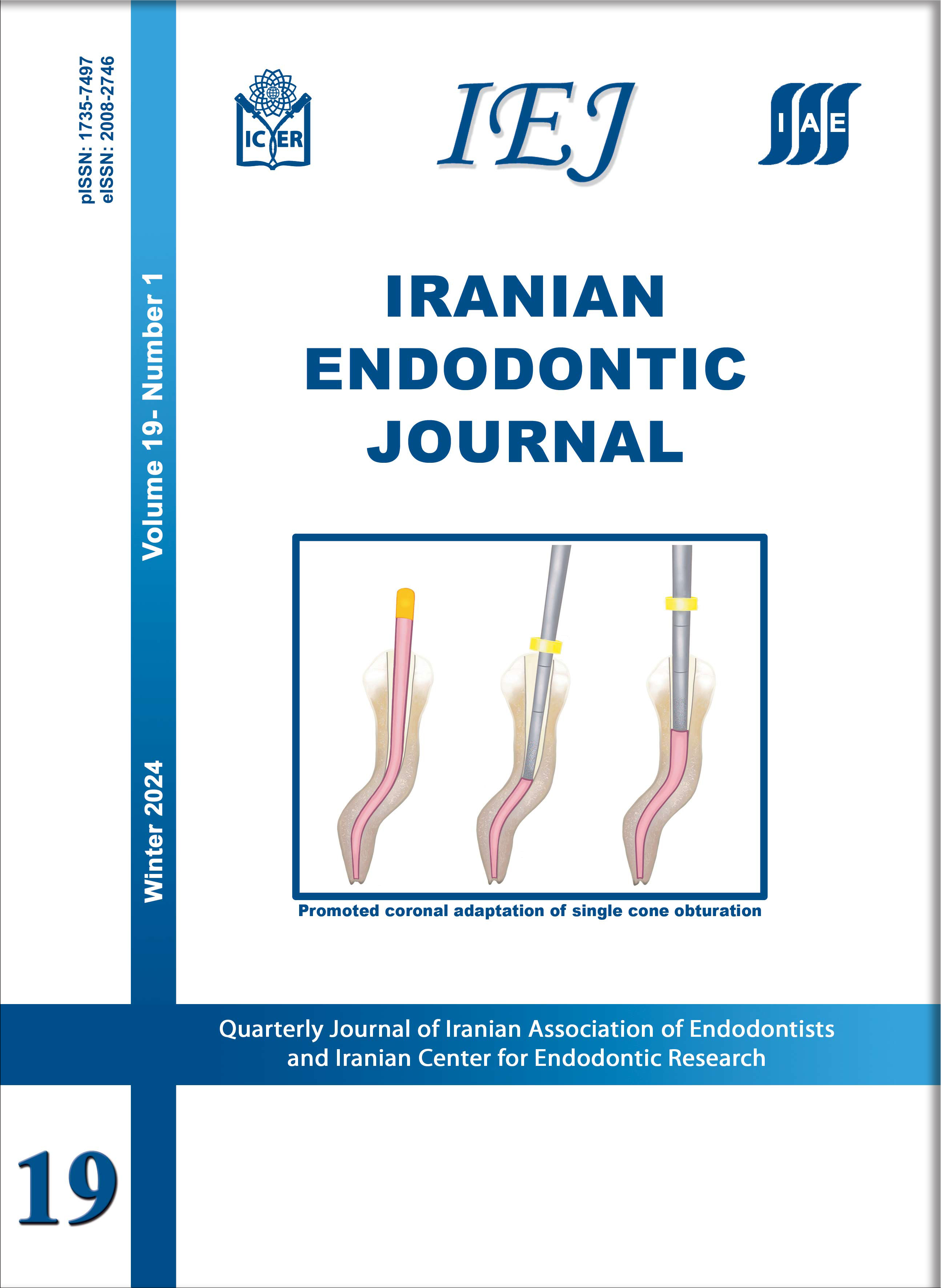Effect of Low Power Laser on Incisional Wound Healing
Iranian Endodontic Journal,
Vol. 1 No. 2 (2006),
1 July 2006,
Page 45-47
https://doi.org/10.22037/iej.v1i2.359
INTRODUCTION: The effectiveness of low power lasers for incisional wound healing, because of conflicting results of previous research studies, is uncertain. Therefore, this study was carried out to evaluate low power laser effects on incisional wound healing. MATERIALS AND METHODS: Incisional wound was produced on thirty-six mature male guinea pigs under general and local anesthesia. In half of the cases, He-Ne laser radiations were used for five minutes and the rest were left untreated. Animals were divided into six groups of six animals each that were killed after 3, 5 and 14 days. After histopathology processing and H&E staining, specimens were examined for acute and chronic inflammations, epithelial cell migration, epithelial seal and barrier formation, fibroblast migration, fibrosis, clot formation and granulation tissue formation. Mann-Whitney U and the Wilcoxon tests were used for statistical analysis. RESULTS: Statistically significant differences were found between fibroblast migration, acute and chronic inflammation of radiated groups and the control group at 5 days interval (p<0.05). There was no statistically significant difference at 3 and 14 days between laser radiated and control groups. CONCLUSION: This study showed that He-Ne laser had beneficial effects on incisional wound healing particularly at 5 days interval; however, further research on chronic ulcers is recommended.




